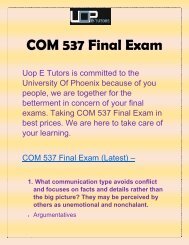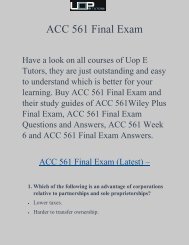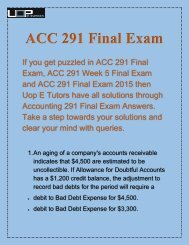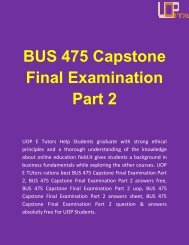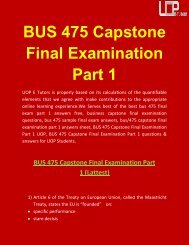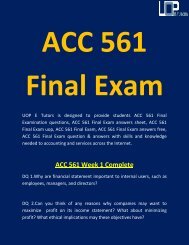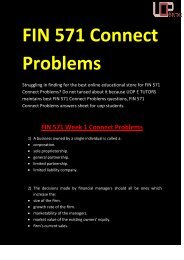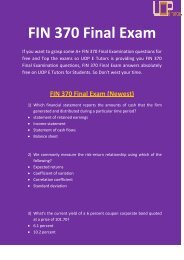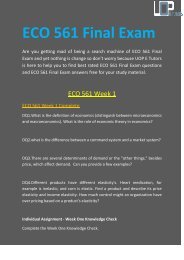ACC 291 Final Exam - ACC 291 Final Exam University of Phoenix | UOP E Tutors
If you tired of searching about ACC 291 Final Exams, sit back & relaxe and visit UOP E Tutors for best ACC 291 Final Examination questions, ACC 291 Final Exam answers free, ACC 291 Final Exam answer sheet for university of phoenix students. http://www.uopetutors.com/university-of-phoenix/ACC-291.html
If you tired of searching about ACC 291 Final Exams, sit back & relaxe and visit UOP E Tutors for best ACC 291 Final Examination questions, ACC 291 Final Exam answers free, ACC 291 Final Exam answer sheet for university of phoenix students.
http://www.uopetutors.com/university-of-phoenix/ACC-291.html
- TAGS
- uop-e-tutors
- exams
- education
- study
You also want an ePaper? Increase the reach of your titles
YUMPU automatically turns print PDFs into web optimized ePapers that Google loves.
$5,500,000.<br />
$3,500,000.<br />
$9,500,000.<br />
5) On January 1, a machine with a useful life <strong>of</strong> five years and a residual value<br />
<strong>of</strong> $40,000 was purchased for $120,000. What is the depreciation expense<br />
for year 2 under the double-declining-balance method <strong>of</strong> depreciation?<br />
$38,400.<br />
$48,000.<br />
$23,040.<br />
$28,800.<br />
6) As a recent graduate <strong>of</strong> State <strong>University</strong> you're aware that IFRS requires<br />
component depreciation for plant assets. A friend has asked you to<br />
succinctly explain what component depreciation means. Which <strong>of</strong> the<br />
following correctly describes component depreciation?<br />
The method that requires that significant parts <strong>of</strong> a plant asset with<br />
different useful lives be depreciated separately.<br />
The method used to ensure that the depreciation rate remains constant<br />
from year to year.<br />
The method used to prorate annual depreciation on a time basis.<br />
The method <strong>of</strong> depreciation recommended for an asset that is expected to<br />
be significantly more productive in the first half <strong>of</strong> its useful life.<br />
7) Bonds with a face value <strong>of</strong> $300,000 and a quoted price <strong>of</strong> 97¼ have a<br />
selling price <strong>of</strong><br />
$292,500.





